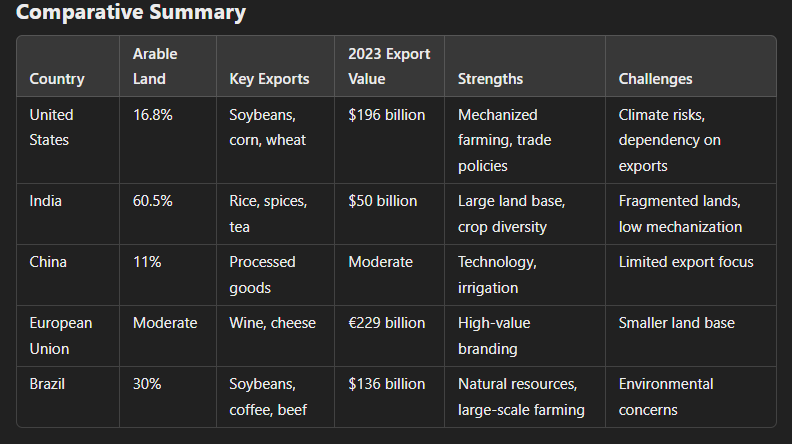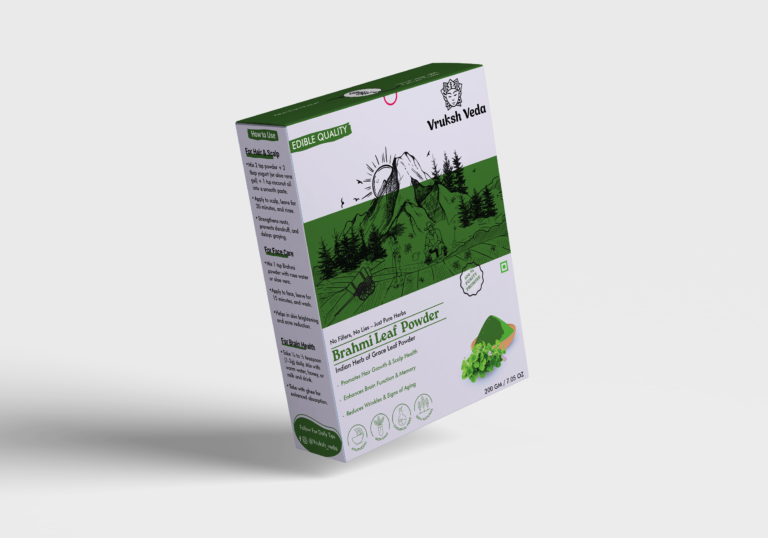Comparative Analysis of Land Availability and Agricultural Export Contributions by Country

The agricultural potential and export contributions of various nations are shaped by factors like land availability, resource management, and economic policies. This report compares key countries—United States, India, China, European Union (EU), and Brazil—based on their arable land share and agricultural export performance.
United States: Global Agricultural Powerhouse
The U.S. utilizes approximately 16.8% of its land for agriculture, reflecting its vast fertile plains and advanced farming techniques. In 2023, agricultural exports reached over $196 billion, driven by key commodities like soybeans, corn, and wheat. The U.S. dominates global markets due to its large-scale mechanized farming. The sector emphasizes efficiency and innovation, supported by government subsidies and international trade policies.
China: Intensive Farming with Limited Arable Land
Only 11% of China’s land is arable, but high-intensity farming practices maximize output Agricultural exports focus on processed goods, though much of the production caters to domestic needs due to its large populations. Reliance on technology and irrigation infrastructure mitigates its limited agricultural land, making it efficient but less export-driven compared to the U.S.
European Union: High-Value Agricultural Exports
Countries within the EU, like France and Germany, use significant portions of their land for agriculture EU’s agricultural exports totaled over €229 billion in 2023, emphasizing high-value products such as wine, cheese, and processed foods. Its focus on quality and branding allows it to command premium prices in global markets despite relatively smaller land areas.
Brazil: A Leading Exporter of Key Commodities
About 30% of Brazil’s land is used for agriculture, supported by its vast natural resources. Agricultural exports, including soybeans, coffee, and beef, contributed $136 billion in 2023. Brazil balances extensive farming with environmental concerns, leveraging its natural advantages for export growth.
India: Agricultural Diversity with Limitations
With 60.5% of its land categorized as agricultural, India relies heavily on farming for food security and economic stability In 2023, India’s agricultural exports stood at $50 billion, primarily from rice, spices, and tea However, productivity is constrained by fragmented landholdings and traditional farming methods. India’s challenges include low mechanization and climate-related risks, which limit its export potential relative to its vast land base.





